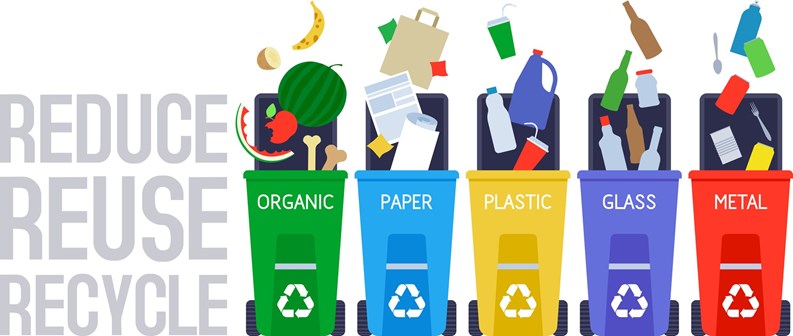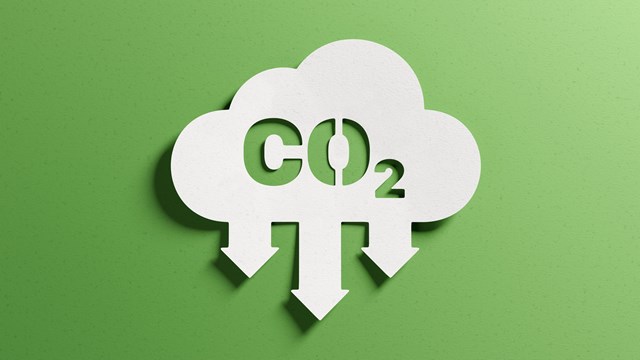Saving the planet from the effects of climate change is an urgent—and gargantuan—task. It’s such a huge, global issue that the actions of individuals and small entities like co-op and condominium communities to help can seem pitifully inadequate. While that’s understandable, the climate change crisis is the cumulative result of both individual and collective behaviors over time, and our response should be the same. The truth is that every little bit of effort counts. We can be a part of the answer by recycling, reusing, and reducing our energy consumption, and thereby its effect on the environment. Getting buy-in from busy residents - who themselves may feel that the effort is an additional hassle that’s futile at best - can be tricky, but at this point, the alternative is simply not acceptable.
Recycling
Recycling is not a new concept. It’s been around for decades. We produce a huge volume of items that don’t break down over time; styrofoam egg cartons and other packaging, for example, don’t decompose the way cartons made from biodegradable materials do. They stay with us for literally hundreds of years. Imagine how many styrofoam containers are used every single day - let alone every year - by the billions of people who live on our planet. Where does all that refuse go? Sadly, it mostly winds up in landfills and oceans, where it accumulates and continues to pollute our environment, both with the sheer volume of waste material, and with toxic chemicals that leach into the surrounding ecosystems.
Recycling is one way to break this cycle, offering one way to mitigate the impact of non-biodegradable waste by turning it into something else. While sorting recyclables may be a nuisance to us, in the end provides a way to ‘eat our cake and have it too’ before we drown in our own garbage.
When it comes to multifamily communities and how we contribute to solving the problem, Dan Wollman, CEO of property management firm Gumley Haft says, “They, the residents of a community, have to want to save the planet,” he explains. “Clearly, recycling is one of those activities related to saving the planet. It may not seem like a personal thing, but individual residents have to want to do it. Otherwise, they may throw that plastic bottle into the same container as regular trash. There’s an innate component here.”
“There is mandatory recycling in every building in New York City,” says Giulia Alimonti, principal architect of CTL Group, a construction engineering company based in Skokie, Illinois, with offices in Manhattan. “Building managers must make sure residents are complying with all sorting requirements. The superintendent and the staff are responsible for putting sorted garbage out for collection. There are fines for mistakes in garbage sorting.”
One board member of a small condo in Manhattan’s East Village can attest to this —she says that while the owner-occupants of the 12-unit building are conscientious —bout separating their metal, plastic, and paper recycling into the appropriate bins in front of the property, it’s a perpetual struggle to get the building’s handful of rental tenants to sort their trash and not just throw everything into the closest toter and call it a day. After friendly reminders to the tenants failed to correct the problem—and fines from the Department of Sanitation began to escalate for each additional infraction— the board finally put the owners of rented units on notice that they would be responsible for paying any future fines resulting from their tenants’ behavior. The board member says that seems to have gotten the message through, as there have been no further pizza boxes and junk mail in the recycling bins.
One super of a mid-size, mid-block co-op on the Upper West Side says that he too has several residents who regularly deposit recyclables in the regular trash. He says that he checks as best he can, but the garbage collection crews have more precise methods. “They have eyes like eagles,” he says. “They can spot the smallest piece of plastic, and then the building gets fined, and there’s no appeal.”
At the most basic level, sorting is the responsibility of those who create the waste. Not only does improper sorting defeat the purpose of recycling in the first place, in this case it winds up costing the negligent resident’s co-op or condo real money. By stressing the importance of recycling on a global level —and sticking those responsible for ignoring recycling rules with the fines imposed for their negligence—buildings can help tighten up their own practices, and thereby reduce their environmental impact.
Re-Use
Along with recycling, reusing items like glass jars, clothing, dishes, pottery, household items and even books go a long way to reducing the amount of waste a household produces—and it’s free! Unlike the reprocessing of cardboard or plastic, reusing items often involves little more than simply washing them and putting them somewhere where the next potential user will find them.
One 64-unit co-op in the Gramercy Park section of Manhattan has turned this practice into a near science. They have designated areas in their basement for hard goods such as glass, dishes, and pottery, with another for kitchen equipment like pots, pans, and appliances. They even have a book exchange—with shelves donated by one of the residents who redecorated their unit—and clothing and electronic (computer) waste catch bins obtained through the City Department of Environmental Protection (DEP). The board president reports that the effort has had excellent results. As mentioned above, a willing population is the key to that success.
In Massachusetts, recycling efforts are set on a town-by-town basis, explains Scott Wolf, CEO of BRIGS, a real estate management firm based in Boston. “Some [municipalities] mandate recycling, some do not,” he says. “Individual programs are based on where the property is located. In some localities, individual condominium communities have instituted their own programs, regardless of local requirements. There are problems with pick-up from private trash companies, though. They won’t pick-up the bags if the recyclables are not sorted properly as per local requirements. Another problem is the recycling of cardboard from packages. The boxes must be broken down before collection will take them. It piles up in some communities due to the sheer volume of daily deliveries. Residents don’t want to break down the boxes, and the building staff can’t keep up with it.” (This issue is widespread; one manager of a condominium association in Somerville, Massachusetts, even reports that residents will cut their names off boxes, but won’t break down those same boxes.)
Reduce
Another important component to slowing climate change is reducing the amount of energy we use overall. In New York City, Local Law 97, the most far-reaching and ambitious law of its kind in the United States, has made that reduction in consumption mandatory. It requires all property owners of buildings larger than 25,000 square feet to reduce their carbon footprint by eight percent by 2050.
Alimonti explains that for co-op and condo properties there are simple programs, like replacing the existing lighting with LED lighting, that pay back quickly. Another simple-to-do and relatively inexpensive project that associations and corporations can undertake is installing convection covers for steam radiators with built in fans and thermostats to increase their heating efficiency. “Con Edison pays for most of it,” Alimonti says. “Start with the easy-to-do projects and work your way up to the more expensive and intensive projects.”
Alternatively, points out Wollman, “The requirements under Local Law 97 are stringent. Compliance may be difficult or unobtainable for some smaller buildings. Four buildings are currently suing New York City, saying the law is illegal because they simply can’t get under the mandated threshold. In a small building that’s already burning natural gas, there’s not much more you can do. The short answer is that we don’t see buildings undertaking anything more than is required by regulations. Laws are different with respect to say, roof replacement. A white roof saves energy, but it’s more expensive. You might do something with a roof over a garage where you put plantings and rocks on top to reduce your carbon footprint. But a co-op or condo is not spending the money to change their roof just to make the world a better place to live. They change it when they have to, like when the roof is leaking. That’s when we also look at environmental issues.”
Wolf points out that there are programs like Mass Saves in Massachusetts that rate your property for energy efficiency. Condominiums are aware of the importance of monitoring electricity and water usage. “Some condominium communities will go through each unit each year to make sure sinks, toilets, and other water-using appliances are working properly and not wasting water and running up water bills. We recommend checking water fixtures every six months.”
New Options
Keval Sushruth, an associate engineer also with CTl Group, is developing a model to estimate energy usage that will also advise buildings on how to reduce their energy usage. According to Sushruth, “Local Law97 focuses on carbon emissions from natural gas or electric consumption for buildings over 25,000 square feet. We are creating a model to measure consumption and recommend ways to reduce it and to achieve compliance with LL97. The model measures a building’s energy usage including all appliances, the electrical loads, the cooking and all related systems, and comes up with efficient ways to reduce emissions. These recommendations may include using better insulated windows, re-designing HVAC systems, or adding over-cladding or covering of exterior walls with insulation to limit the need to heat in winter and cool in summer.”
Perhaps a useful way to look at climate change and what we as individual citizens and members of co-op and condominium communities can do to positively affect it is to approach the issue as a chronic and potentially deadly disease, like diabetes, rather than an acute infection like the flu that will resolve itself over time. There’s no quick fix to diabetes or to climate change. Diabetics must learn to understand, live with, and treat their disease— and we must do the same to combat climate change. There’s no cure; there’s only better management.
A J Sidransky is a staff writer/reporter for New England Condominium, and a published novelist. He can be reached at alan@yrinc.com.







Leave a Comment